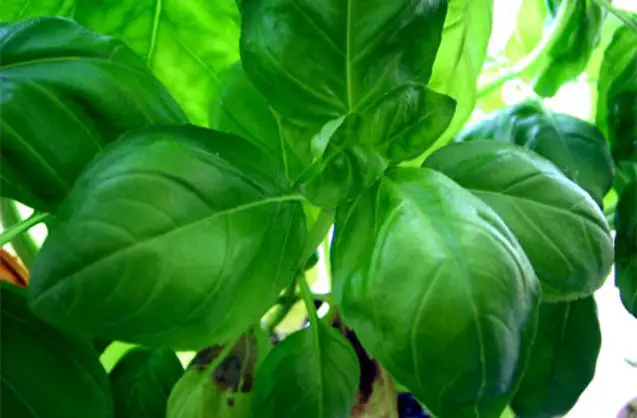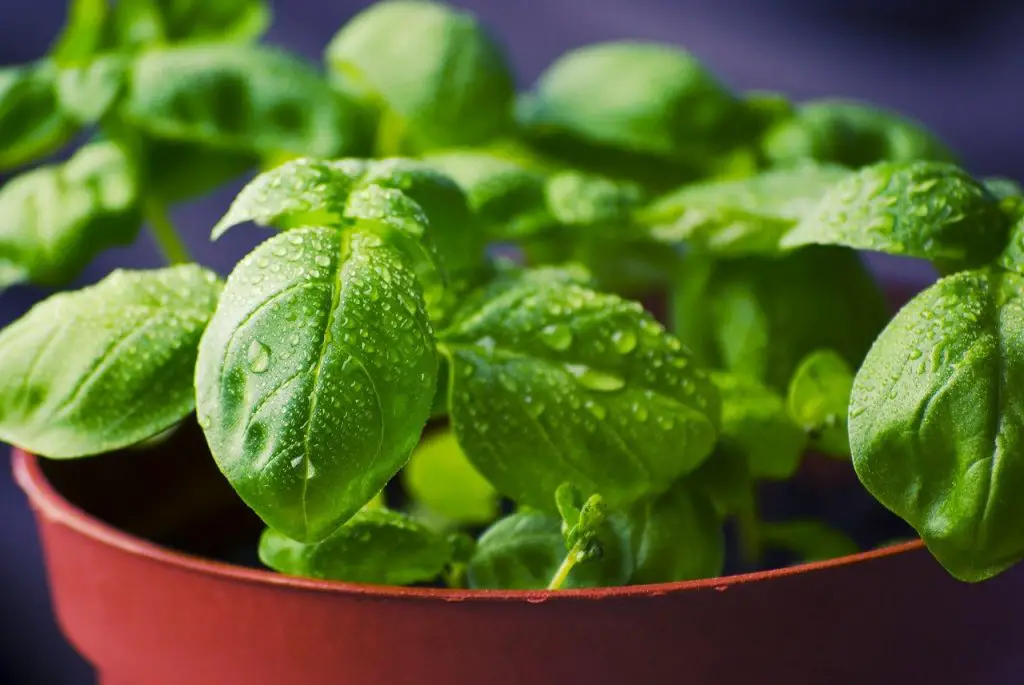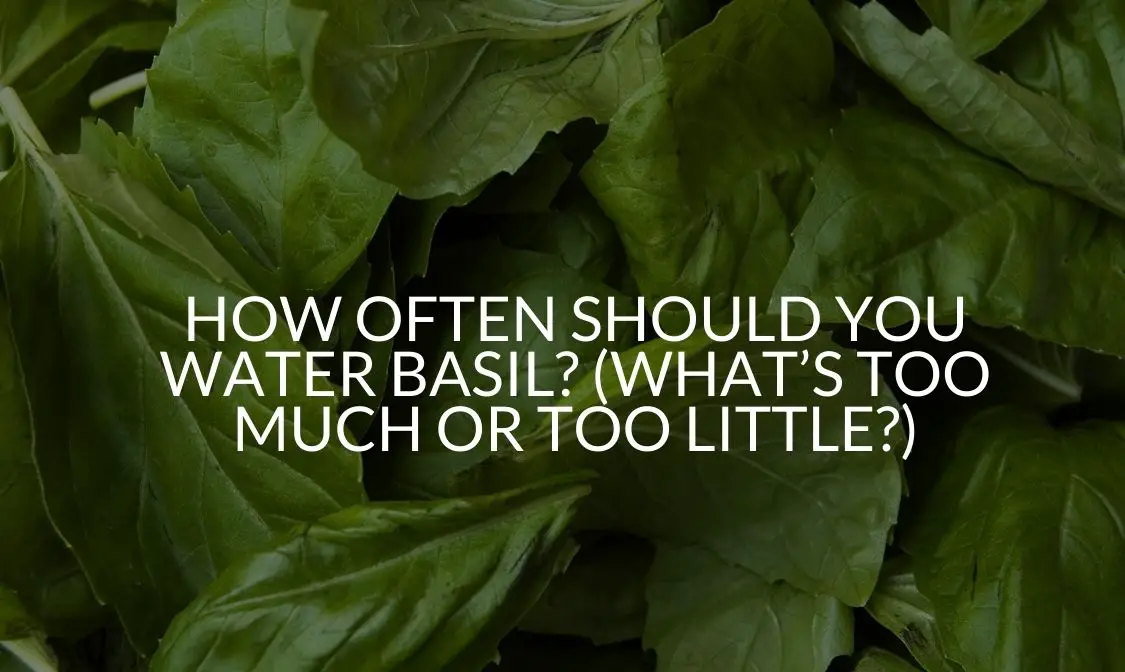Who doesn’t love the refreshing tinge of the basil leaves lingering on your taste buds after a great supper? Well, the majority sure does treasure their basil least as it was found to be one of the most grown at-home herbs for multiple households.
While gardening your own herb garden can be a peaceful and rewarding task, newbies often make the mistake of destroying their plants by simply using too much water. Now, nobody wants their herbs to go to waste or for them to lose their gardening motivation. So, today we’ll be fixing the rookie mistake of watering your basil leaves correctly.
“How often should I water basil?” Is a great question considering the nature of the plant itself. Some people water their basil plants once a week, and others opt for twice a week. Read ahead to find out our guide on how often you should water basil and other frequently asked questions.
How Often Should You Water Basil?
So how often should you be watering your basil plants? Essentially you need to water the plants as needed to keep the soil moist to some extent but not too watery that it bogs down the plants. You will notice that basil plants can droop if the soil is too dried out as well.
So, in order to maintain balanced moisture for the plants, you should water basil around every 4 to 5 days to keep the basil healthy. This, however, is subjected to change based on the climatic conditions for the plant as well. If the temperature is hotter, you will have to increase the watering frequency and vice versa.
Alongside the frequency, you should ensure that the container for the plant has drainage holes. This will make sure that the water is well spread out across the soil and has been quenched of its thirst thoroughly. In order to get the most even water distribution, drip irrigation is the way to go.
We also recommend that you check the moisture levels daily and this will vary based on the size of your container as well. Smaller containers end up requiring more water than larger containers. Vigilance is key to marinating a perfectly moisturized and nourished basil plant, so be sure to keep an eye out.
How To Water Basil In Pots?
As we mentioned earlier, pots and containers can create an ideal condition for the basil plants to actually be nurtured. They have the most favorable drainage conditions that allow you to maintain a well-balanced soil profile. You can ground the plant in good compost, which will ultimately retain the water, which creates that basil aroma and flavor that we all love.
It is best to water the potted basil plants around every 4 days to make sure that the basil soil is consistently moist and you don’t have to face wilted basil. However, to cultivate premium quality basil with perfect flavor and aroma, the full sun can make the conditions drier that will dry out the plant base in turn.
So, how can you lessen the chances of your soil drying out? The first is to attentively monitor the moisture contents in the soil. You can check the moisture levels easily by placing your finger inside to check for the moisture content. As soon as you feel the soil be dry, it is time to re-water the plants. With careful monitoring, you can achieve the desired water needs.
Additionally, it is best to place your plants in larger containers rather than smaller ones. Large containers end up retaining more water content and can go on for 3 to 4 days without water compared to smaller pots that require daily watering. The management of watering frequency is what assists the plants to grow fully.
The container or pots should ideally be made out of terracotta as the porous material allows for better breathability of the soil. The clay material also retains its coolness which would otherwise evaporate due to the scorching heat. This way, you can easily maintain the schedule of watering your plants every 3 to 4 days. In the case of rainfall or an overcast, they might even go on for a week without water.
To avoid the root rot problem, it’s best to invest in containers that have drainage holes and provide a drip tray alongside. This way, you can easily drain out excess water without bogging down the root of the plant itself.
How To Water Basil In Your Garden?
Basil plants in the garden have different needs than potted basil plants. Their water intake is dependent on how hot the weather is, the wind intensity, rainfall, and humidity as well. However, if the compost in which the basil has been planted is amply moisturized, then the area around the basil has a good application mulch.
Generally, the basil plant would need to be watered twice during the summer week and once in the winter week. This balance will help to nourish the structural integrity of the plant and help it grow healthy. The more compost and leaf mold you utilize, the more moisture there will be in the compost to ensure that the roots grow healthily and are resilient in tougher climates.
Try to apply a layer of compost that measures up to at least 1 inch on the surface to make sure the soil retains its hydration and decreases the evaporation rate. Remember to always water the root of the plant to promote firm root development.
How Often Should You Water Basil Seedlings
Maintaining a good balance of moisture is necessary while the basil seedlings are developing. With basil plants, the maintenance of soil is something that requires extreme care. You must make sure that the water content is enough to nourish the seedlings and not overwatered.
Overwatering may cause the seedling to bog down and lead to root rotting and fungal diseases within the plant. Seedlings require all your attention, so you need to be extra attentive to cater to their water needs and factor in the variables that determine whether the soil will dry out or not.
The best practice when it comes to growing basil seedlings is to water the plant every two days and ensure that the container system allows it to drain the water while marinating a good moisture level. Since basil seedlings are not fully developed and established, they can dry out more than actually established plants.
To prevent them from drying out, make sure that the top inches of the soil are constantly moist with enough water content. The water tends to evaporate throughout the day, so waiting in the morning is the best way to go about the situation.

How Do You Know If Your Basil Is Overwatered?
So, how do you know if your basil is overwatered? This is a common concern when gardening any type of herb, and the only way to avoid this is by learning the plant’s behaviors. Here are a few symptoms that may arise in the case of overwatered basil plants:
- You may notice yellow leaves which start from the bottom leaves and move upwards
- Wilting leaves that often drop
- The pungent odor from the soil of the plant itself
- Stunted growth of the plant
- Rotten roots that are bogged down and have black or brown colors
In chronic cases, however, you will see that the majority of the problems start from the root of the plant itself. Overwatering will cause the root to start rotting and eventually die. This is a pertaining problem with plants that have standing water on their soil.
Moldy roots are a massive problem. It can cause stunted growth for the basil plant and will not allow you to reap the fruit of the plant. It may even prove to be fatal for the plant in certain severe cases.
What To Do If Your Basil Is Overwatered
Fixing an overwatered basil plant is different for the severity of each case. While overwatering once is not a problem, you can let the soil dry out and then water when the dry levels restore. However, fixing a chronically damaged root is far more complicated and requires other extensive treatments.
Let’s take a look at some of the ways you can treat an overwatered basil plant and recover your dying basil plant:
- Taking Off The Damaged Leaves: Once the leaves of a plant are yellowed, they will not be green again. Removing them from the plant is the first step to fixing the health of the plant itself. These dead parts will only suck out the productive energy from the healthy parts of the plant. To remove the damaged leaves, it is best to use sterile utensils and shears to carefully pick off the dead leaves. Clean the utensils afterward and make sure that you have thoroughly removed the rotten parts.
- Pruning the basil plant: In severe cases, the extent of a rotten plant may be larger. In this scenario, you will cut the entire damaged section. This will enable the plant to become healthier and save it from extensive pruning that may occur later on.
- Stop watering your plant: When you’ve established that your plant is overwatered, it’s crucial that you do not water it further. In case the weather is rainy, bring your plants to a dry and safe area or cover them with a small tent of plastic sheets. Stopping all water supplies is necessary for the healthy recovery of the basil plant.
- Removal of Mulch: You will notice that mulch will accumulate at the base of the basil plant, so you need to remove it through the use of hands and rake it to pull back. This will help the soil retain the appropriate amount of moisture, so replace the mulch when the plant returns to its healthy condition.
- Letting the soil completely dry out over the course of several days: Once the water supplies have been halted and you’ve completed the above mentioned steps, the next step is to let the soil rest. The resting period is the amount of time needed for the soil to dry out completely and restart its moisture retention cycle again.
- Relocating the plant: If all else fails, the best option you have is to completely relocate the plant itself. This is only applicable if the roots haven’t completely rotten. Try to plant it in an airy area that allows for a proper watering cycle and has a good drainage system.
How Do You Know If You’re Not Watering Basil Enough?
It is equally important to make sure you don’t dry out your plant when trying to compensate for overwatering the basil plant. Most people do not adhere to a proper watering schedule, which leads to a dried-out plant.
If you water your plant when you feel like it or leave it dry for too long, you may risk under watering your plant, which could end up disrupting the health of the plants themselves. This condition can also occur when the plant is let out in hotter climates that take away the moisture quicker than you might expect.
The first step to fixing an under watered basil plant is identifying its problems. You will see that the basil plant will have wilting leaves that are yellow in color. These occur on the bottom end of the plant and move upwards. The plant will shrink considerably throughout this system.
So, how can you salvage an under-watered plant? Well, if the damage is minimal, you can easily save your basil plant by simply watering them. However, if it is highly dried out, it may be difficult to save the plant entirely. This would be the case if you were not watering your plants for an extended period of time.
As we mentioned earlier, a proper watering schedule is the only way to go with when taking care of your own basil plant. Do not skip out on any days, and always remember to increase the water intake of the plants as the temperature gets hotter.

FAQ
Can Too Much Water Kill Basil?
Too much water can, in fact, kill your basil plant. As we specified earlier, the higher water content can bog down the root and actually causes it to become mushy and moldy. Too much water paves the way for fungus development and can mess up the overall soil composition.
Once the root is rotten, there is hardly a way to bring It back to life, so latching onto ay hope would be useless. The root is the reason for the basil plant’s health and the only way to ensure proper health is by scheduling the water intake frequency of the plant and being attentive about the amount of water that you use i=for the plant.
To briefly answer, yes, too much water will certainly prove to be fatal for your plant if you are not vigilant enough.
How Do You Water Indoor Basil
Watering indoor basil plants are easier than managing them outdoors. You will need to water them every 4 to 5 days and make sure that the hydration levels in the soil are enough. Bail leaves generally require a full sun exposure, so try placing them y in a well-lit area of your house or a sunny sill.
Additionally, it is important to make sure that the plants are potted in a container that has adequate drainage holes as well as a tray to capture the water. Attention is key, so make sure you are consistently checking up on the soil and ensuring that it is well moisturized and not drying out.
Some rooms in your house will be more humid than others. You can take the kitchen, for example, the more humid the area is, and the longer the plant will retain its moisture. However, a room that is constantly air conditioned or is generally hotter will make the plants lose their water content waster than expected. Therefore you will have to go through the process of trial and error to figure the perfect watering schedule for your basil plants.
Another handy tip is to put your plants in larger containers. This is because smaller containers dry up quicker and demand more maintenance than larger capacity containers. They also promote root health and basic development overall. Try opting for containers that span across 12 inches at least to make sure your basil leaves are well hydrated and aerated at the same time.
Recap
So, watering your basil plants can be a tricky task. You don’t want to over-water them or deprive them of the necessary moisture. The best way to make sure that the watering is done right is purely by sticking to a schedule.
Once you’ve devised a schedule for the watering frequency, you can easily nurture your basil leaves in a healthy way. Always check up on your plants and make sure to give them your attention. Your plant is like a child, so take care of it as best as you possibly can. Happy gardening!
Sources
- https://www.gardenerreport.com/how-often-to-water-basil-plants/
- https://www.hunker.com/13404948/how-often-do-i-water-my-basil-plants-in-a-planter
- https://www.gardeningknowhow.com/edible/herbs/basil/basil-watering-tips.htm
- https://www.fiskars.com/en-us/gardening-and-yard-care/ideas-and-how-tos/planting-and-prep/growing-basil-planting-and-harvesting#care
- https://www.gardeningchannel.com/overwatering-basil-solutions/
- https://www.thespruce.com/overwatering-your-herbs-1761871#:~:text=Wait%20for%20signs%20that%20your,dry%2C%20it’s%20time%20to%20water.
- https://herbswithin.com/basil-plant-dying/

